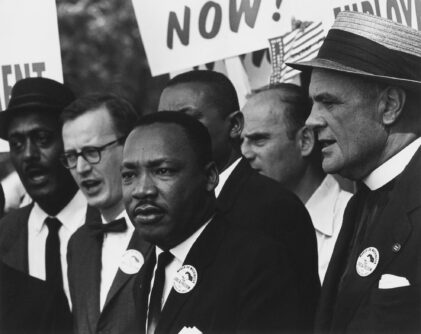Since 2020, foundations have poured nearly $17 billion into grants earmarked for racial equity. But have those dollars achieved the intended outcomes?
As we consider issues shaping philanthropy in 2024, race relations will undoubtedly be a part of the conversation. Given that the Israel-Hamas conflict has exposed antisemitism in the current social justice movement in America, questions remain about whether racial harmony and equal treatment of all people is truly the goal of these groups.
Three and a half years since the murder of George Floyd and the ensuing racial “reckoning” across America, nearly $17 billion earmarked for racial equality has been granted by foundations since 2020. But do dollars equal impact?
The Numbers
Some 78,133 grants valued at $16.8 billion were pledged for racial equity from 2020 to October 2023, according to data collected by Candid. This includes cash grants, employee matching gifts, employee volunteer services, in-kind gifts, matching grants and officers and trustees discretionary grants.
In addition, there have been 206 pledges valued at $11.8 billion. If those pledges are met a total of $28 billion will have been given.
To put these numbers in context, Americans gave a total of $499 billion to charity in 2022 of which $105 billion came from foundations. In 2021, Americans gave $485 billion of which foundations gave $91 billion. Finally, charitable giving totaled $471 billion in 2020 of which foundations gave $89 billion.
Candid uses a broad definition of “racial equity” to capture grantmaking that benefits people of color or organizations that explicitly serve these populations. If $17 billion in grants over three years seems low, it’s likely because of undercounting. Candid only counts grants that explicitly mention communities of color as the intended beneficiaries, or the recipient organization specifies a focus on racial/ethnic groups in its mission.
Such a methodological approach is guaranteed to overlook grants that improve outcomes for all Americans such as those aiding communities of color alongside non-minority communities or grants that don’t specify how racial minorities benefit. Scholarships for students from disadvantaged backgrounds, workforce training programs for people in a majority racial-minority area, and veteran’s networks that connect former servicemen and women to support services wouldn’t be coded as improving racial equity, which is a glaring oversight. Candid acknowledged this issue. Concerningly, these limited data points are used to support a narrative that philanthropy is not doing enough to advance racial equity.
The Outcomes
Donors have good reasons to oppose diversity data collection, as my colleague Joanne Florino flagged and I wrote about in 2023. Methodology aside, even if just $17 billion was dedicated to racial equity, the question is whether this grantmaking has achieved the intended outcomes.
Assessments of racial justice philanthropy measure dollars granted rather than impact achieved, such as improved educational outcomes for minority children and greater opportunities and economic independence among minority groups.
Demonstrated increases in grantmaking for Black communities by foundations are still not enough in the eyes of some perennial philanthropic critics. They are preoccupied with pushing back against unrestricted grants and grantmaking metrics while pushing for grantmaking only to organizations led by individuals from minority or marginalized communities. Missing are assessments of whether those philanthropic dollars have improved lives for communities and the grant recipients themselves.
In other words, too often this is about checking a box and not cultivating empowerment. As Philanthropy Roundtable says in the True Diversity Statement of Principles, “The best way to uplift individuals and strengthen communities is to foster the sense of agency that only comes when everyone is empowered to reach their full potential.”
The True Diversity Toolkit provides resources for any philanthropic organization that wants to do this, by providing an equality-based, holistic framework for embracing diversity that values every person as a unique individual – not a box to be checked.
Emotion-driven grantmaking divorced from donor intent and best practices can have terrible consequences. In 2020, millions of dollars were poured into social justice causes such as the Black Lives Matters (BLM) Foundation which lacked the infrastructure, good governance, oversight and accountability to ensure gifts and grants are spent wisely.
This group collected hefty sums but is now under public scrutiny for granting as few as only $1 out of every $3 for charitable causes and under public investigations for misuse of the funds it collected. Even leaders of affiliated BLM groups have defrauded donors in Boston, Atlanta and even the U.K.
Furthermore, the brutal slaughter of Jewish civilians by Hamas on October 7, 2023, exposed that social justice groups like BLM who support Hamas and demonstrate blatant antisemitism do not truly support racial healing. This undercuts any claims that they are working for racial harmony and equal treatment of all people.
As donors consider their giving strategies in 2024, they should be wary of calls for more social justice grantmaking with no accountability, no expectations and no metrics of success. Grantmakers may already be engaged in philanthropic work that does not earn a “gold star” for supporting racial equity but is already delivering on their missions and demonstrating measurable impact for communities including racial minorities.
Giving to groups that are achieving good outcomes should be encouraged, and donors and organizations should not be pressured to deviate from their plans.
Learn more about True Diversity.
Originally published at Philanthropy Roundtable on January 5, 2024, at www.philanthropyroundtable.org/what-of-the-17-billion-racial-reckoning-in-philanthropy/.






